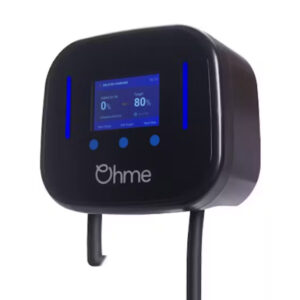Tethered or socketed electric car charger for home?
It’s a dilemma many of us face (or will have to eventually) when deciding which electric car charger for home best suits our lifestyle.
For clarity…
Tethered means the EV charger has its own attached charging cable, which you can’t remove.
Socketed means the EV charger hasn’t got a charging cable, and you have to plug your own cable into the charger.
Deciding for the workplace is a relatively easy choice, well we think so anyway.
You see, most workplaces where the EV chargers get installed are in car parks accessible by nighttime intruders.
So the last thing you need is no-gooders on nighttime excursions cutting off charging cables for the shear fun of it, or to strip out the copper to weigh in for cash.
But deciding wether to buy a tethered or socketed EV charger for home is a different decision.
It’s unlikely you’ll get no-gooders chopping off charging cables, whilst they’re garden hopping (remember this?) in the wee hours.
So, the decision comes down to personal life style choice, in the way of aesthetics and convenience.
It’s not really a price issue – as daft as it may seem – our best priced electric car charger for home is a tethered Wallbox Pulsar Plus, which comes with a 5-metre attached charging cable.
We must note at this stage that separate charging cables can cost up to £150.
Some people don’t like having the charging cable on show, thinking it’s a little unsightly.
But for others the convenience of quickly plugging-in or unplugging when it’s raining or you’re in a rush, far out-ways the time needed to rummage around in the boot to find your charging cable.
The only caveat to this is the Andersen EV charger, as the charging cable is hidden away in an aesthetically pleasing colour coordinated (to your choice) wall box. Although, you do pay a hefty premium against all other EV chargers.
To be honest, my wife insisted on a small black socketed EV charger, which is somewhat hidden on the gate post.
But others choose bright colours and funky designs to show off to their family and friends.
Which is the reason we are independent and not aligned to installing just one type of electric car charger for home.
We provide a range of nine different manufactures, all with a multitude of their own options and colours. Including 10-month interest free credit and longer finance terms.
But which one will you choose?
Our experienced advisors are here to help you decide.


